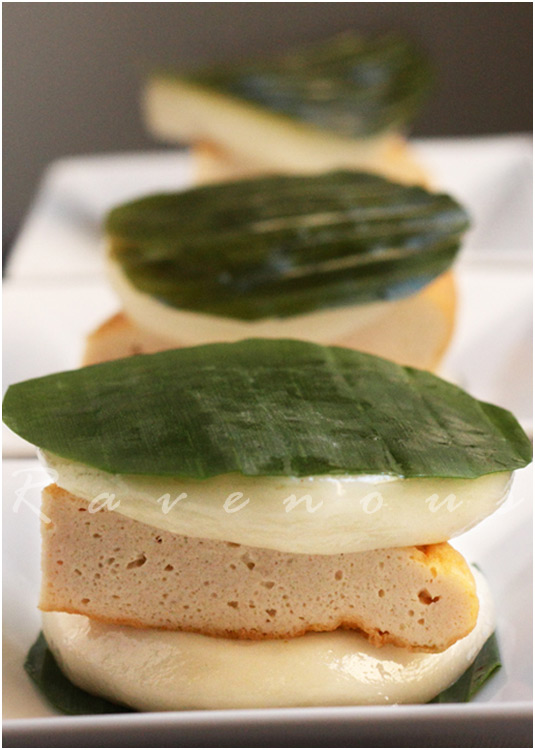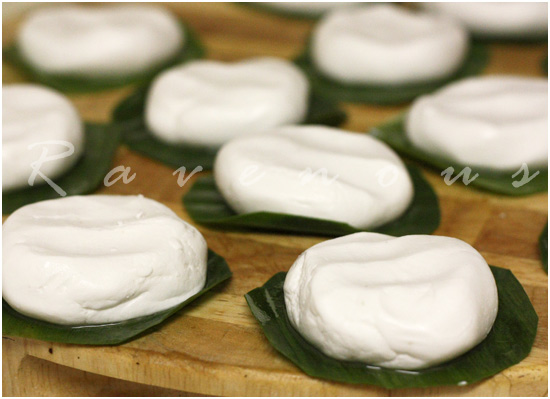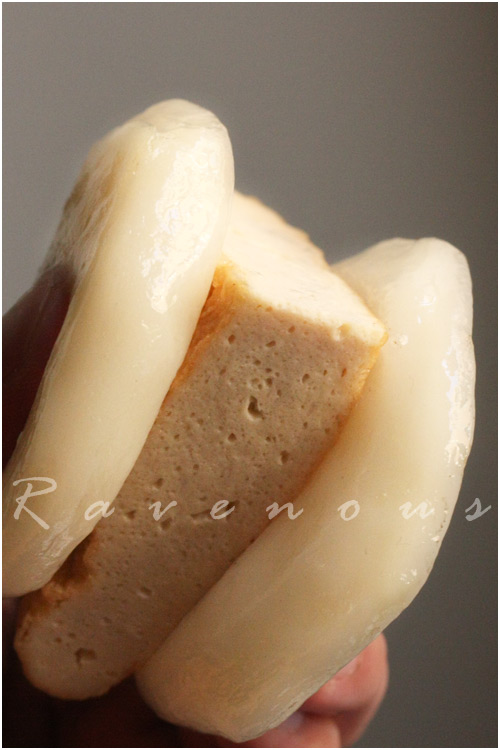
Banh day (pronounced yầy) is a very simple and traditional rice cake with a great story. Vietnamese legend has it that the wise King Hung Vuong the VI had a competition to decide which one of his 22 sons was going to succeed him on the throne. The competition was to find the most tasty dish in the country and serve it to the King during the last day of the lunar month. The person with the tastiest dish would inherit the throne (Top Chef eat your heart out). So each prince went off and scoured the land and seas in search of rare delicacies to make that perfect dish. The exception was one prince name Lang Lieu (Tiet Lieu). Though he was a prince by title, he was humble and lived a modest life as his mother was not the queen (in those days the king had many children with concubines). He stayed in the Vietnam to search for his inspiration. However, as the day of judgment neared, he still did not have a dish. But one day he fell asleep and in his dreams a deity appeared to him and rewarded him for his humbleness and modest life and gave him directions for two different rice dishes:
"make two different rice cakes, one square cake to symbolize the earth and in it, put mung beans and pork to symbolize the plants and animals. Finally wrap it in banana leaves and call it banh chung. With the same rice make a round rice cake to symbolize the heavens and make it white and pure and call it banh day."
So on the last day of the lunar month, the day before the first day of spring, all the princes showed King Hung Vuong VI their dishes. Many were lavish, exotic, and delicious. But the simplest and one that intrigued the King the most was Lang Lieu's banh day and banh chung. The king asked him to explain these dishes and Lang Lieu said,
"Rice is the most precious food item in the land and yet also the most abundant. I have created dishes that symbolize the harmony between the earth and heaven so that all of our people can enjoy."
Realizing the humbleness and wisdom of Lang Lieu, King Hung Vuong VI, declared him the winner and successor to the throne of Vietnam. The recipes were passed to the people of Vietnam to enjoy and to this day, banh chung and banh day are served during Tet, the lunar new year by almost everyone in the country. If you heard a different version of this story...well, as legends go--it changes every time it's told :)
Even though we're 6 months ahead of the lunar new year in February 14, 2010, these dishes, especially banh day are often eaten year round. Sandwich a piece of fried cha lua (Vietnamese ham) and it becomes a Vietnamese "hamburger" that's surprisingly tasty and brings back great memories eating this growing up. Cha lua can be found in most Asian groceries either wrapped in aluminum foil or banana leaf.

Banh Day (Vietnamese Rice Cakes)
Printable Recipe
- 16 oz package of glutinous rice flour (makes about 12-14 cakes)
- 1 3/4 cups cold water
- 1/2 ts salt
- cooking oil
- banana leaves cut into circles about 3-4 inch diameter (or use aluminum foil)
- steamer
- cha lua (Vietnamese ham)
Brush a light layer of oil on top side of the banana leaves or aluminum foil.
Pinch off a small piece of dough and roll into a small ball slightly smaller then the size of a golf ball and place on banana leaf. Gently flatten just a bit, but not too much as it will flatten further when cooked.
Place in steamer tray with plenty of space between as these will expand. With a boiling steamer, steam for about 8 minutes until completely opaque. Over steaming will cause it to flatten. Remove and allow to cool about 10 minutes or so and serve with slice of cha lua.
To store, brush on another thin layer of oil on top of one rice cake and then flip another rice cake on top so that the banana leaves are on both ends. Wrap with saran wrap. This stores in the fridge for about a week. Reheat in the microwave for about 45 secs.

Stick a piece of cha lua (Vietnamese ham) inside and it's simple but yet tasty and even addicting snack. Some even dip this in fish sauce. The soft and sticky glutinous rice cake celebrates the simplicity and importance of rice in Vietnamese culture and is a treat fit for both Kings and commoners.
No comments:
Post a Comment